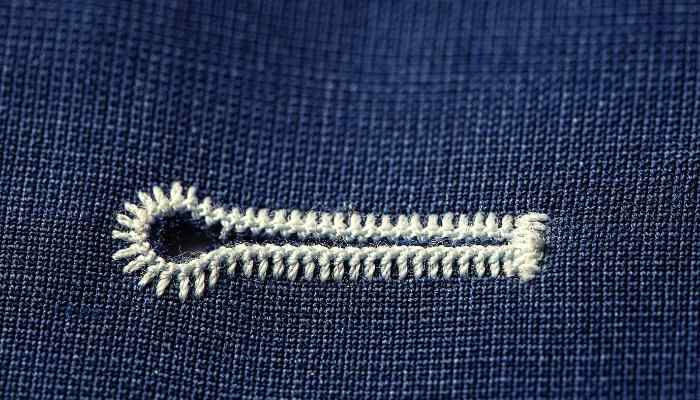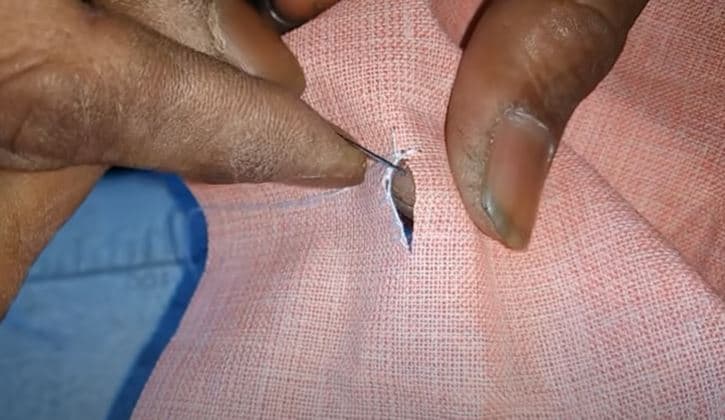How to Make Professional Buttonholes?
We are always a bit surprised when we hear about people having sewing anxiety. And on that very “scary” list remains sewing buttonholes. Most of the people were first scared of (including us), but once they learned how to make professional buttonholes, they realized that it is basically a fail-proof process.
Now, you might be wondering why we are stating such a bold claim. Well, we learned from a source that was highly reliable and contained easy-to-follow information. And we are going to replicate exactly that here. So, stay completely worry-free and just continue reading.

Steps to Follow to Make Professional Buttonholes
The tasks become easier with the best buttonhole sewing machine. But not all of us have that, do we? And even though the topic of hand-sewn buttonholes vs machine is a pretty heated up topic, we are not going to actually focus that here. Instead, we are going to prioritize learning how to sew buttonless. And the steps for that are:
Step 1: Choose the Right Type of Buttonhole

The first thing that you need to do is select the right types of knitted button bands. In short, there are basically four different types. One is an eyelet, which has one small hole. The other is a pearl that contains two small holes parallel to each other.
And the rest are bounded and keyhole for other button types. Both look similar, but the keyhole is a bit slanted and longer in length. However, if you want your buttonhole to come out professional-looking, you must opt for the bounded. It is basically the one that most learns when learning how to knit a vertical buttonhole.
Alongside that, most professionals will teach that type of buttonholes when teaching how to knit a buttonhole in garter stitch. Nevertheless, when it comes to making the buttonhole look professional, none of the types really come close to the bounded one.
Step 2: Get the Right Materials

If you are planning to use an old machine, first, learn sewing a buttonhole on an old machine. However, we are primarily going to focus on the manual process or modern machine here. Also, you are going to need some fabric, sewing pins, fabric markers, embroidery scissors or rag quilt scissors, and, finally, interfacing.
Step 3: Draw a Buttonhole Box on the Fabric
Now that you have the right materials start drawing boxes on the fabric. Here, you need to consider the size of the buttons and the pattern. Usually, it is necessary to add 1 cm of extra length with the length of the button. Also, the width needs to be 1 cm larger too. Then make a horizontal division in the middle of the box.
Step 4: Start Cutting and Pinning the Patches
Like us, many believe that to learn how to tidy up knitted buttonholes, you first need to learn how to properly cut and pin the patch on the boxes. Here, the patches are going to 4 x 4 inches. The edges need to be trimmed adequately in the end. So do not worry about that at this moment. Then, pin the batch on top of the boxes.
Step 5: Stich

The fifth step would be to stitch. However, you must learn how to knit a buttonhole in moss stitch if you are planning to make buttonholes on sweater materials. Nevertheless, when stitching, select a short length and start from the long side.
Step 6: Cut the Buttonhole Box
Remember we made a division in the middle of the box? Well, we are going to cut that open now. Here, to keep things tidy, you need to cut V on the ends of the boxes. Then, pass the patch through. This patch should lay flat, just like we did on how to knit a buttonhole in rib.
Step 7: Make Lips
Now, you need to make lips. Here, fold the top and make it have a shape like a lip. Then, from the back of the patch, pin the lips into place. Repeat the same process for the second lip. Here, you need to press the lips lightly, or else the lips are going to be deformed, which we would not want.
Step 8: Stich Again
After making the folds, you should notice that there are small triangles on the end of the boxes, like knitting a buttonhole band. You need to sew them together to secure the folds.
Step 9: Repeat and Complete
All that is left to do now is remove the basting threads and repeat the process for the other buttonholes. Follow the same procedure for the other ones.
Final Words
As you can see, learning how to make professional buttonholes is not that hard. All you need to do is have a steady hand and follow the steps properly. By doing so, you will end up with highly professional buttonholes.
REFERENCES:

